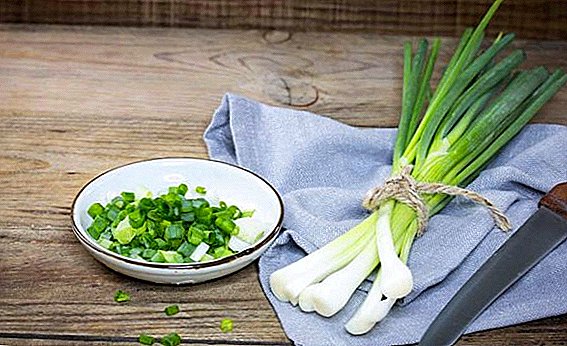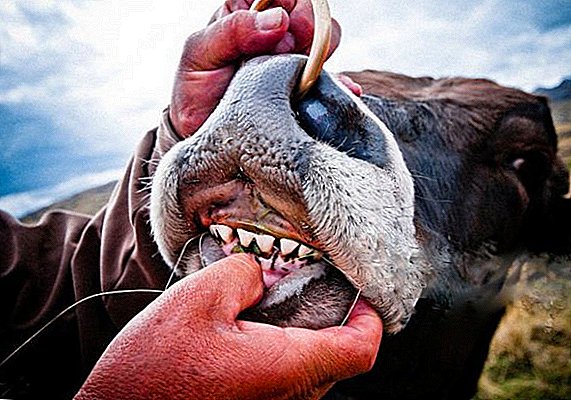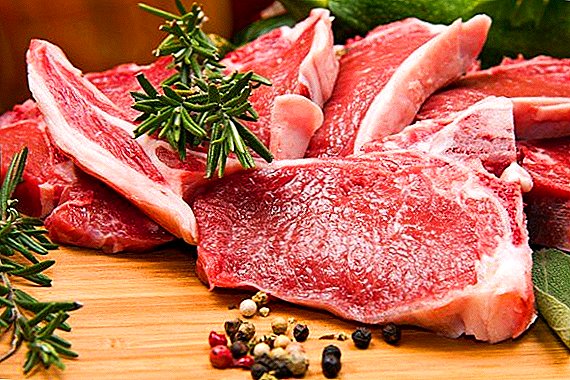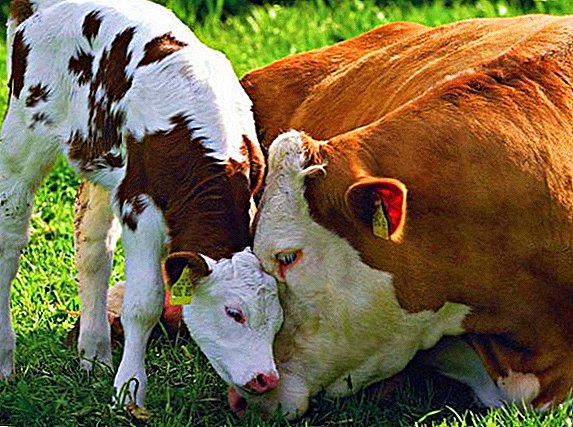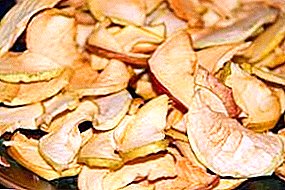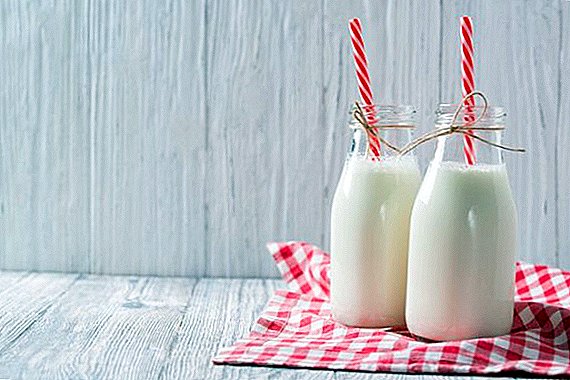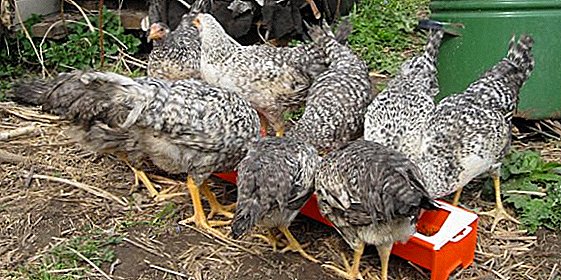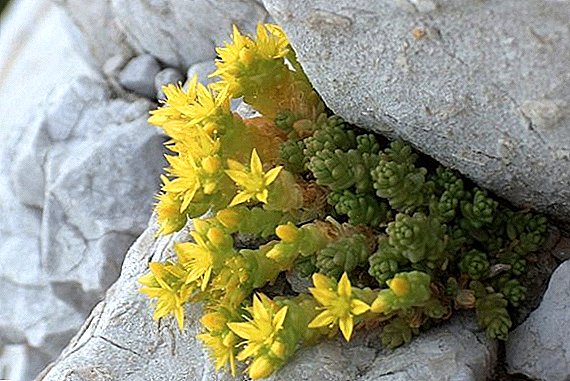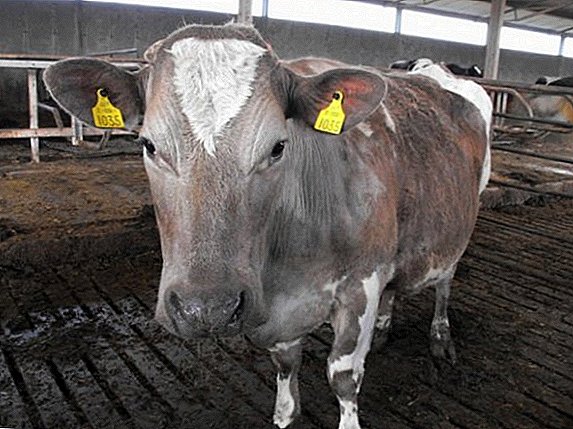 Cattle, alas, is also at risk of being affected by various diseases. These include parasitic diseases, in particular, pediculosis, or, quite simply, lice. This ailment is able to permanently remove from the usual way of life both a cow and its owners, as well as cause considerable damage to the entire economy.
Cattle, alas, is also at risk of being affected by various diseases. These include parasitic diseases, in particular, pediculosis, or, quite simply, lice. This ailment is able to permanently remove from the usual way of life both a cow and its owners, as well as cause considerable damage to the entire economy.
How cow lice look like
Lice are wingless small insects, parasitic, among other animals, and on cows. Their size, depending on the type, ranges from 1 to 5 mm. Long body louse body, flattened in the direction of the back and abdomen.
The head has a narrowing in front. The color of an adult ectoparasite is usually inconspicuous. They feed exclusively on blood, every 2 hours, the process of sucking blood lasts about 40 minutes. The life cycle of lice, like other insects, consists of several stages. After sucking blood, the louse lays eggs, called nits. They, in turn, are glued to the root segment of the hair.
After one and a half to two weeks, the larvae hatch out of nits - nymphs that differ little from adults, except in size, and immediately begin to parasitize. After 11-14 days nymphs become adult sexually mature insects.
Read more about what diseases can hurt cows and how to treat them.
In the external environment, ectoparasites do not form, but under favorable conditions they can live for about 3-7 days. Localization of insects depends on the time of year.
In the cold period, the lice are looking for a warmer place on the body of the cow:
- at the base of the horns;
- in the upper parts of the mane, neck, back;
- in the groin area.

In the warm period, parasites spread throughout the body of the animal, and their neck, ears, legs, and shoulder blades become places of their “settlement”.
The harm that lice inflict on the body of the cows is as follows:
- Biting, the louse releases a special substance that dilutes the blood of the cow and causes a strong allergy in the form of an unbearable itch. As a result, physical and mental exhaustion of the animal occurs and, as a result, there is a danger of defeat by more serious illnesses.
- Insect - carrier of protozoosis, bacterial and viral infections. Directly in contact with blood, the louse cannot infect. The risk of injury arises if the insect is crushed - then drops of liquid scattering with harmful microbes get onto the cow sores, and infection begins.
It will be useful for you to read about how and what to treat versicolor in a cow at home.
Short-headed cow louse
This is the largest louse - it has a length of up to 4 mm. The belly of this insect is dark blue, the chest and head are yellow-gray, the eggs are white and have a thick skin. The life cycle of the parasite lasts about 2 weeks, during which time the louse has time to put aside 1 egg per animal hair.  After 1-2 weeks, a nymph emerges from the egg, and after another 2 weeks it grows to an imago, and everything goes in a new circle. Detect short-headed cow lice can be on well-marked white nits on the neck.
After 1-2 weeks, a nymph emerges from the egg, and after another 2 weeks it grows to an imago, and everything goes in a new circle. Detect short-headed cow lice can be on well-marked white nits on the neck.
Important! The appearance of lice in cows indicates a decrease in animal immunity.
Long-headed calf louse
This ectoparasite is only 2 mm long, the color is dark, the life expectancy is approximately 30 days. The insect is born 14 days after the adult female lays eggs. After 14-20 days the nymph will grow to adult lice. The long-headed calf louse is difficult to spot on the animal's body.
Hairy louse
The smallest parasite: male's length is 1.5 mm, and females - 1 mm. This type of lice is inert, and therefore can only be transmitted by contact. Insects look like dark spots on the cow’s body, and the eggs of this louse are white. Life cycle - 27-29 days.  The hairy louse lives on the head of the animal and no longer moves after being stuck. The female lays 1-2 eggs per day, which she herself attaches to the host's fur. The presence of hairy lice on the animal is determined by the folded hairs on which the parasite's eggs are suspended.
The hairy louse lives on the head of the animal and no longer moves after being stuck. The female lays 1-2 eggs per day, which she herself attaches to the host's fur. The presence of hairy lice on the animal is determined by the folded hairs on which the parasite's eggs are suspended.
Did you know? When mooing, a cow can "hum" 11 different "melodies."
Symptoms of lice in cattle
Signs of lice cows are:
- The emergence of agitation, aggressiveness. Cases of a sharp jumping up of a female cow for no apparent reason, or, conversely, animal apathy, anemia, and impotence of a cow.
- Trembling in the body, the incessant desire to scratch something.
- Weight loss cows, loss of appetite, and sometimes even refusal to eat.
- Reduced milk yield.
- Bites, bruises, scratches, small bumps on the skin.
- The skin loses its elasticity.
- The young growth lags behind, sometimes it dies.

How to remove head lice from cows: what to do, what to handle
The very first condition is to identify the lice in a cow, isolate it from other animals, and then contact a veterinarian. In self-treatment, there is a danger of not getting the desired result and starting the disease to a state of incurability. Lice in cows are removed in 2 ways: medication (veterinary drugs) and folk remedies. Consider these ways.
You may be interested to learn how to get lice in chickens.
Veterinary drugs
In drawing up the scheme of medical treatment, the formation of adult lice, their larvae and the time of nymphs, as well as the incubation period, are taken into account. Drugs on lice eggs do not work, so 2-3 treatments should be carried out with a weekly interval.
With such a scheme, nymphs that appear do not have time to give birth to offspring and lice die out. The third treatment is recommended to fix the result. Removal means are conventionally divided into preparations for external and injection use.
For external use:
- Neostomosan. It is a concentrated emulsion. Before use, it is diluted, the resulting solution is usable for 2 hours. Using a sponge or spray, the product is applied to the animal's hair and after 2 hours it is washed off. During these 2 hours, the parasites die, but their eggs remain. After 7-10 days, one more treatment is needed. The drug is available in cans, vials and ampoules.
- Butox. Emulsion. Apply to hair and washed off after 15 days. Re-treatment - after 1 week.
- Sebacil Solution or concentrated emulsion. Means wash or wipe the animal for 5 minutes left on the body and then wash off. Has a contraindication: a cow during lactation.

For injection:
- Ivermek. Drug of wide action for destruction of ectoparasites. Valid for 10-14 days from the date of introduction. Burenka make an injection in the area of the croup or neck. The recommended dose is 200 µg of the drug per 1 kg of live weight of the cow. Contraindications: dairy, emaciated cows, infected with infectious diseases, as well as pregnant 4 weeks before lactation.
Important! With drug treatment, cow's milk can be eaten only after the cow has fully recovered and drugs are removed from its body. - on average from 3 to 5 days.
Folk remedies
The advantages of folk remedies over drugs are that, in addition to effective treatment of cows, they are completely harmless to their health and are convenient for treatment at home.
Among the folk remedies for the effectiveness of removing lice stand out:
- Wood ash. The fur coat of a cow is rubbed with it where parasites lodge most often. When rubbing should be borne in mind that the ash is an irritant to the skin, so the process should take place without undue effort. Lice go for 14 days. The method is applicable to both cows and calves.
- Sagebrush. It is used as a decoction: the flowers of wormwood pour 1 liter of boiled water, insist for half an hour. Then they mix the broth with chemeric water (you can buy it at the pharmacy), add 3 pieces of previously rubbed tar soap. Borenka daily washed with a decoction for 5 days, then - a pause for a week and repeat. Lice hatch for 20 days, given the pause.
- Birch tar. The drug is applied to the ridge, neck, the area between the horns, near the tail of a cow. A cow will get rid of head lice in a decade.
 Medical treatment is safe for cows and relieves the animal from lice in 2-3 procedures.
Medical treatment is safe for cows and relieves the animal from lice in 2-3 procedures.Important! When medicating with folk remedies, the milk of a cow affected with lice can be drunk.
Preventive measures
The main measures to prevent the appearance of lice in a cow are:
- Maintain constant cleanliness in the stable.
- Full nutrition of the animal.
- Periodic washing and cleaning of the skin of the cow.
- Use for processing the room in which there is a cow, as well as the animal itself 0.5% solution of chlorophos. Premises are recommended to be processed either before the stall period or in the summer.
- Application from time to time of odorous substances that repel insects - Hexamide, Dikrezila. Hexamide has a repellent effect, and Dicresyl acaricidal and insecticidal.
 Lice should be treated responsibly, without delaying treatment until later. However, the best treatment is to prevent infection.
Lice should be treated responsibly, without delaying treatment until later. However, the best treatment is to prevent infection.Did you know? People and cows live side by side already about 8000 years.Timely preventive measures and proper care for the female will only result in the health of the animal and the profit of the farmer.


